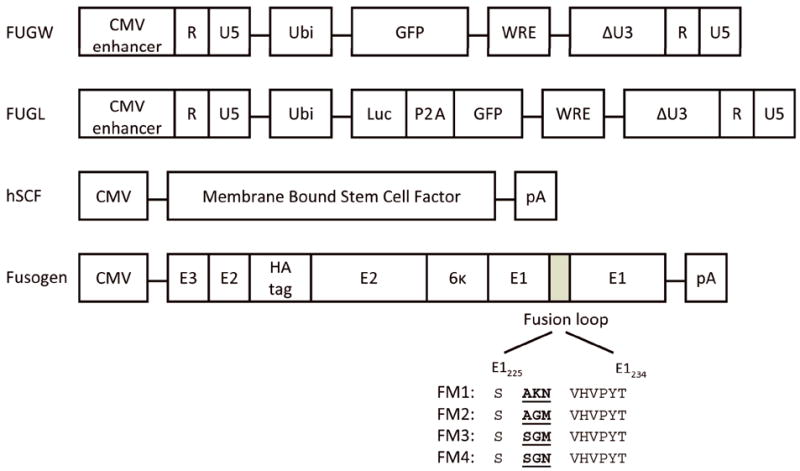Figure 1.

Virus-producing constructs used to make the recombinant targeting lentiviral vectors. Schematic diagrams of constructs encoding transfer lentiviral vector FUGW, lentivector expressing luciferase reporter FUGL, membrane-bound human stem cell factor (hSCF), and fusogenic molecules derived from Sindbis virus glycoprotein. CMV enhancer: the enhancer element derived from human cytomegalovirus; Ubi: the human ubiquitin-C promoter; GFP: enhanced green fluorescence protein; WRE: woodchuck responsive element; ΔU3: deleted U3 region that results in the transcriptional activation of the integrated viral LTR promoter; Luc: firefly luciferase gene; P2A: self-cleaving linker; CMV: human cytomegalovirus immediate-early gene promoter; pA: polyadenylation signal; E1, E2, 6κ, E3: glycoproteins of the Sindbis virus (E1 for fusion, E2 for receptor binding, 6κ a linker, and E3 is a signal sequence); HA tag: 10-residue epitope HA tag sequence (MYPYDVPDYA). Fusogen molecules were constructed by making several alterations (Morizono et al. 2005; Yang et al. 2006), including deletion of amino acids to disrupt the binding to heparin sulfate glycosaminoglycan, resulting in a binding deficient but fusion-active fusogenic protein FM1. Mutations were then made in the fusion loop region to create various engineered fusogens (FM2, FM3, FM4) amino acid sequences start at 226 of wild-type Sindbis E1.
